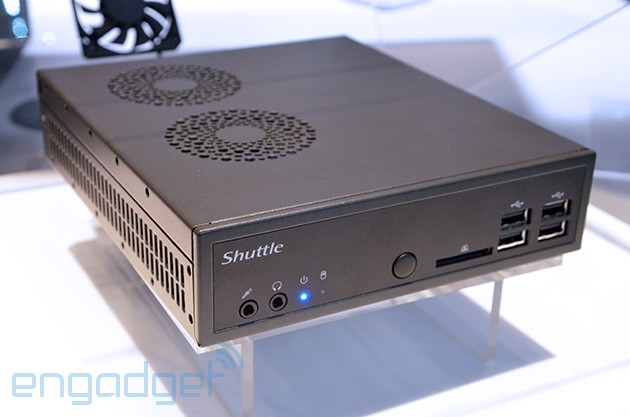Walk into any sports bar and chances are you will find a combination of big screen TVs, projectors and video walls showing some sporting event. It's like walking into your local Buffalo Wings and finding yourself surrounded with more flat screen TVs than you'll find at your neighborhood Best Buy. I can just imagine this guy who looked up and had an epiphany... All those channels and no local advertising to be seen.
This guy's name was Dennis DeMay of
Television Point of Sales, Inc.
Dennis tells me his company offers a proprietary video server that detects when an ad is coming up in a TV broadcast and then plays the ads in a small window in the lower right hand corner of the screen while the system pushes local ads in full screen. The alternate feed is switched in real time and the transition is seamless.
Using this system, bar owners can sell advertising space on their screens while respecting all broadcast regulations because the ads are not prevented from playing. They are simply resized on the fly and played in a smaller window while ads controlled by the venue owner are shown full screen.
It's an interesting take on the whole local content thing and assuming no one is breaking any laws, a pretty nifty way for venue owners to take control of their screens and offer some ad space to local businesses.
Here the company's corporate summary...
Television
Point of Sales, Inc. (TVPOS) provides proprietary
video server products and services which enable business venues offering
television-based entertainment to advertise directly to their most valued
customers... those already on-site. We offer no less than the Holy Grail of
effective advertising: a way to market relevant products directly to a highly
motivated and well-qualified demographic at or near the point of purchase,
where buying decisions or impulses can be acted upon immediately.
TVPOS has developed a unique and highly
effective PC-based ad delivery technology which monitors conventional broadcast
television signals to identify network ads in real time, instantly
switching to an alternate audiovisual feed to show advertisements or
promotional spots of immediate interest to the patrons of compatible venues. The
transition from network programming to in-house messaging is seamless and
unobtrusive, appearing where ads would normally be expected to occur and making
for a natural television viewing experience without interrupting program
content. Depending upon the network, there are typically from four to five
advertising breaks per channel per hour during the business day, giving
you up to ten minutes of advertising space per hour at two minutes per break
(for example.)
The
conventional approach to television advertising is expensive and inefficient:
Network programming supplied to viewers is periodically interrupted by
commercial breaks consisting of several unrelated and often intrusive ad spots
aimed at the general demographic presumed to be watching a given show. In this
sense, programs are a delivery system for advertisements, presenting many ads
of interest to only a very small percentage of viewers - a scattershot
approach, at best.
Wouldn't it
make more sense to identify business venues where a sizeable audience of
like-minded consumers is expected to congregate in the presence of television
monitors near a point of purchase, and to advertise only products of immediate
interest to them?
This is where
Television Point of Sales comes in. Our clients are business venues such as
restaurants, bars, health clubs, casinos, banks, and even the rooms of host
hotels during themed conventions. Targeted ads for in-house products could
include featured menu items in restaurants, drink promotions in bars, sports
drinks and concessions in fitness clubs, financial products in banks, and
amenities and featured restaurant promos in hotels.
Implementation
of our system is straightforward: TVPOS AdServers dedicated to
each monitored channel are installed in the client's audiovisual equipment
rack, requiring only power, an internet connection, and standard or HD baseband
television feeds. The equipment interfaces easily with the client's A/V
distribution system to best deliver the desired network programming and
in-house advertisements to their captive audience.
Our servers
can be configured to deliver in-house ads by run of schedule, or by a client's
unique scheduling requirements. Ads are distributed to the servers via an
Internet connection as required, and a summary of ad runtimes and frequencies
can be generated for client use or billing purposes.
TVPOS services include identification of
client advertising needs and potential revenue streams, media development and
presentation, external billing support, system installation and support, and
customization of hardware and software to suit clients' needs.
We have
compelling evidence and feedback from marketing efforts that there is a
significant demand for our services in the U.S. and abroad. Our efforts so far
have been aimed at developing and perfecting our technology to answer the needs
of the market and to chart a strategy to fulfill them. We welcome strategic
partnerships or software license opportunities for those companies in the
digital signage markets that are looking to create a significant edge over their
competitors.
I'm told TV POS is currently looking to license the technology to anyone who wishes to integrate it into their existing digital signage solution.
Anyone interested should contact Dennis at 615-781-2818 or via email: Dennis@tvpos.com














